
Colorado shares a border with seven states: Utah, Arizona, New Mexico (the other three of the “Four Corners” states), Nebraska, Kansas, Oklahoma, and Wyoming. This means that Colorado gets its unique flavor from several distinct regions: the Great Plains and the High Plains, the Rocky Mountain West, and the Southwest.
Due in large part to Colorado’s expansive natural beauty and consistently sunny weather, it’s fast-growing. With a large number of transplants, the population was estimated to be around 5.75 million in 2019, up from 5.1 million in 2010 and 4.3 million in 2000.
Sometimes that comes with a feeling like escaping the bustle a bit, especially if you live in the capital city of Denver. Let’s review what states touch Colorado and learn a little bit about each.
Discover the seven states that surround Colorado, starting northeast and heading clockwise south:
1. Nebraska – Cornhusker State
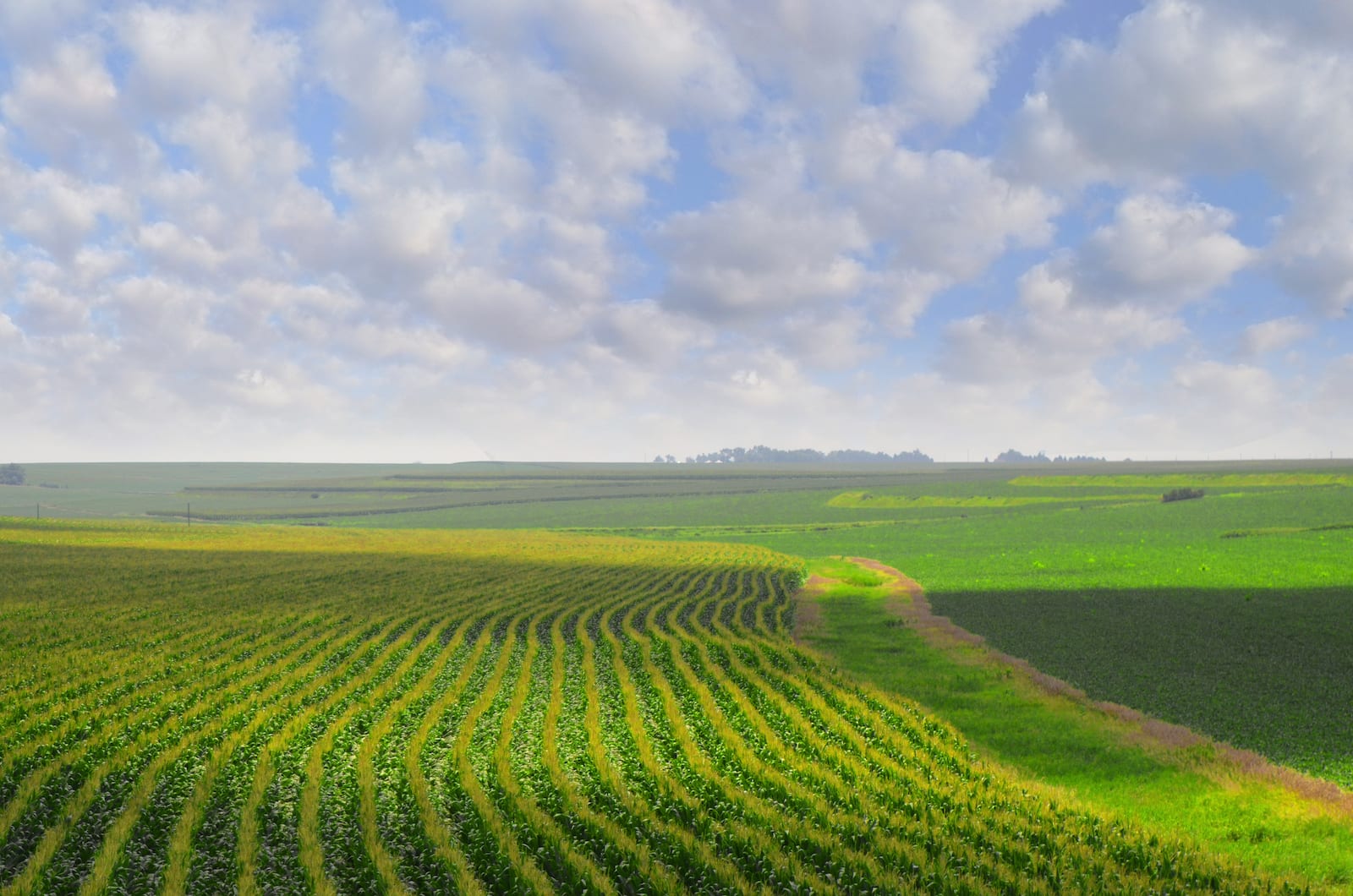 The land and sky, somewhere in Nebraska. Photo: Richard Hurd
The land and sky, somewhere in Nebraska. Photo: Richard Hurd
To the northeast lies Nebraska, whose rolling prairies were home for thousands of years to dozens of Native tribes, including the Pawnee, Omaha, and Lakota Sioux. Lewis and Clark used the Missouri River along Nebraska’s eastern and northern border as they crossed the continent in 1804-1806.
This opened the way for thousands of emigrants on the Oregon Trail. Nebraska became a territory in 1854, and a state on March 1, 1867.
It’s a major producer of beef, pork, corn (it is the Cornhusker State, after all), soybeans, and sorghum, due to the presence of the massive Ogallala Aquifer under much of the state. Nebraska is largely rural and its 1.9 million inhabitants are concentrated in cities like Omaha and the state capital, Lincoln.
Nebraska is growing, however, with an almost six percent population increase since 2010.
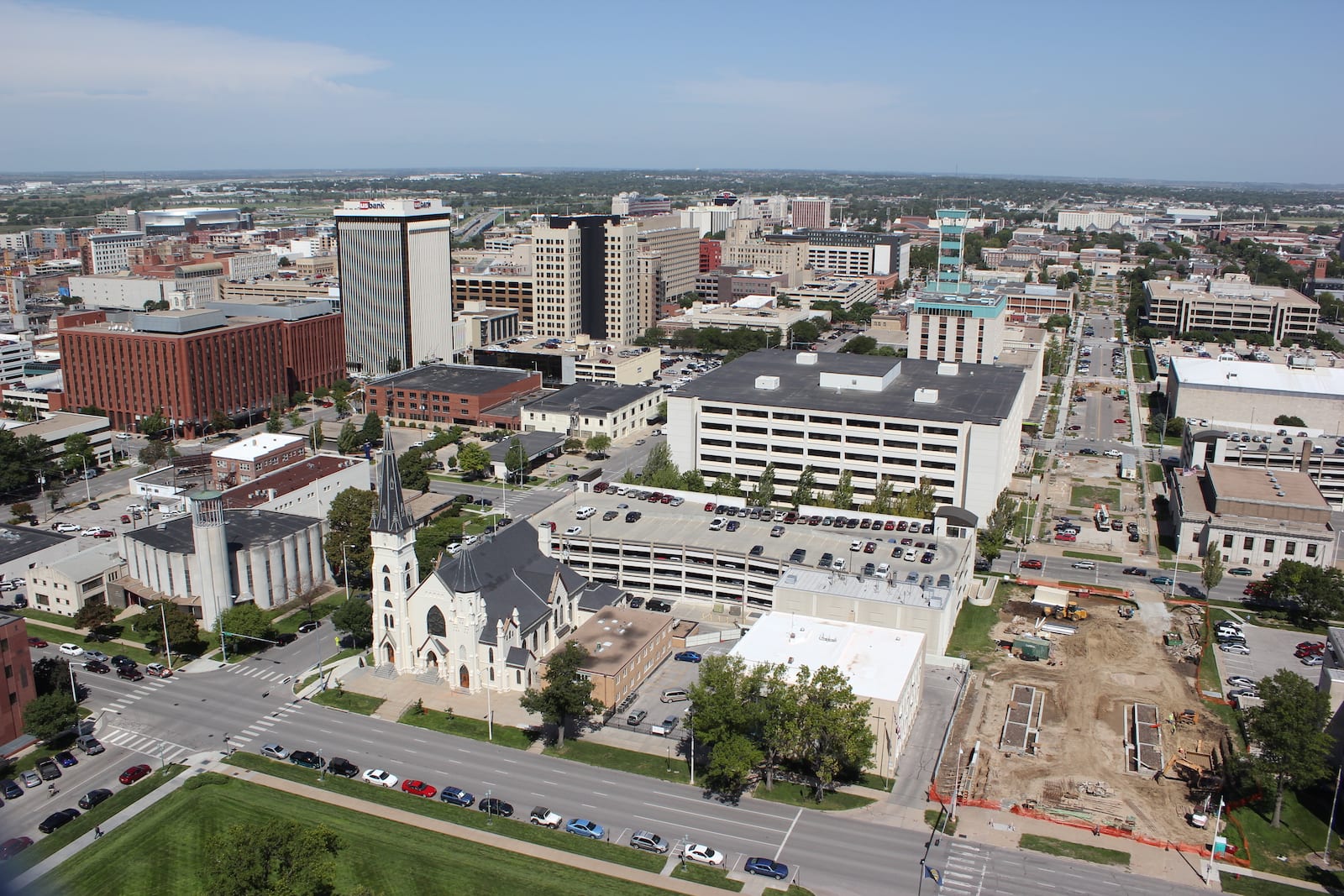 Lincoln, Nebraska. Photo: Robert Geiger
Lincoln, Nebraska. Photo: Robert Geiger
In 1872, former territorial governor J. Sterling Morton proposed a holiday to plant trees in the state. An estimated 1 million trees were planted during the first Arbor Day on April 10, and the National Arbor Day Foundation headquarters is still in Nebraska City. If you’re a fan of Kool-Aid, you can thank Nebraska.
The drink was invented in 1927 by Edwin Perkins in Hastings and is the state’s official “soft drink” (although the state drink is a bit healthier: milk). If you end up in Hastings on the second weekend of August, you can attend Kool-Aid Days and celebrate by getting your own bright red Kool-Aid mustache.
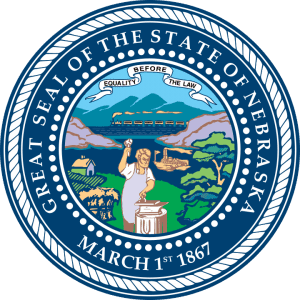 During the Ice Age, mammoths roamed Nebraska’s plains. The world’s largest exhibited mammoth skeleton is on display at the University of Nebraska State Museum in Lincoln. Named “Archie,” the massive 14-foot tall Columbian mammoth was excavated in 1922 from a farm in Lincoln County. Unsurprisingly, the mammoth is Nebraska’s state fossil.
During the Ice Age, mammoths roamed Nebraska’s plains. The world’s largest exhibited mammoth skeleton is on display at the University of Nebraska State Museum in Lincoln. Named “Archie,” the massive 14-foot tall Columbian mammoth was excavated in 1922 from a farm in Lincoln County. Unsurprisingly, the mammoth is Nebraska’s state fossil.
Nebraska’s Sandhills cover about a quarter of the state. This National Historic Landmark is the largest region of intact natural habitat in the entire Great Plains, and an important stopover on the Central Flyway for migrating birds.
In early spring, more than a quarter of a million Sandhill cranes gather on the lazy, cottonwood-lined waters of the Platte River, one of the greatest wildlife spectacles on the continent. Tour the region via the 272-mile Sandhills Journey Scenic Byway.
Motto – Equality before the law
Nickname – Cornhusker State
Population – 1.934 million (2019)
Capital City – Lincoln
Largest City – Omaha
2. Kansas – The Sunflower State
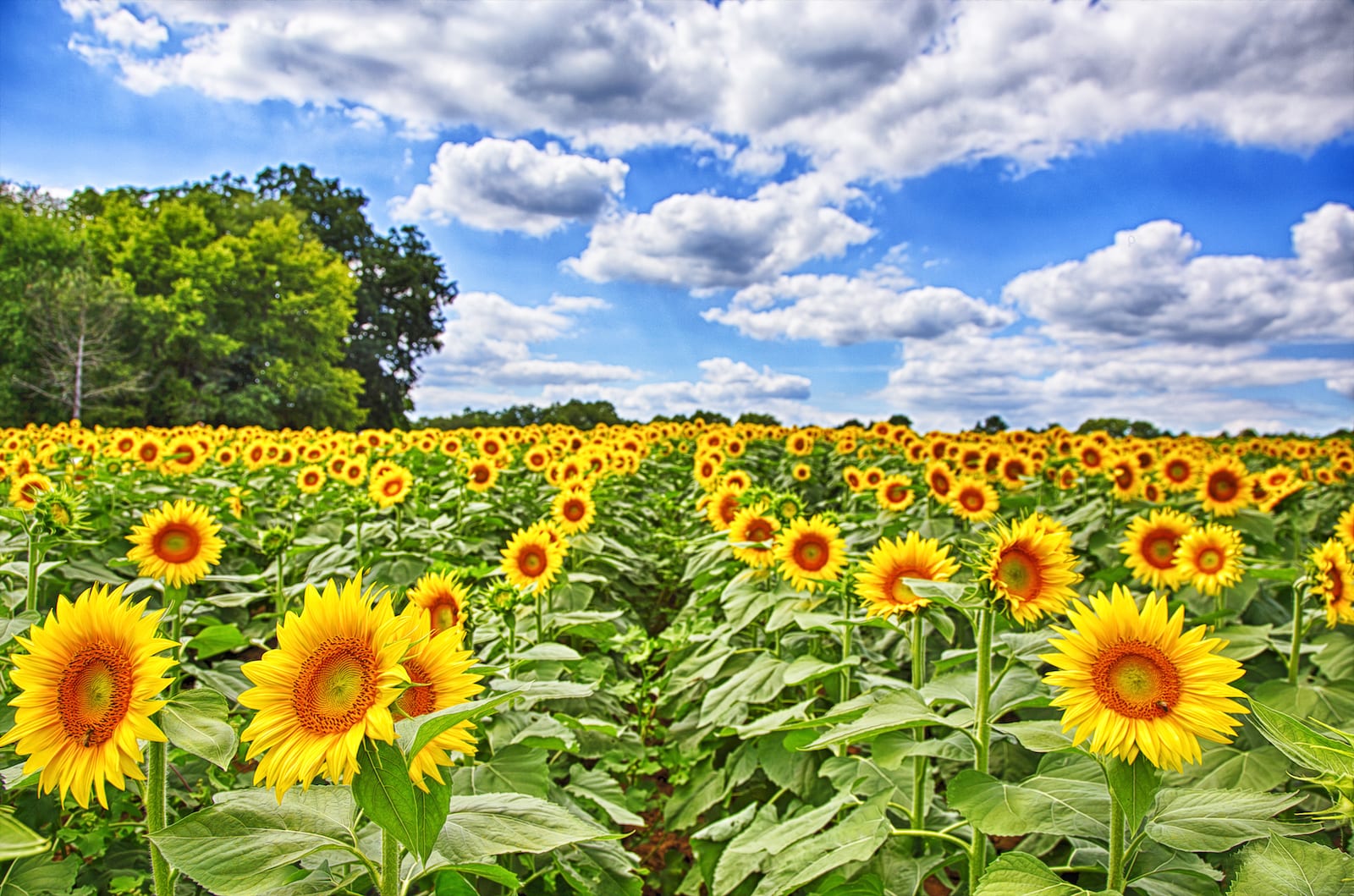 The Sunflower State, Kansas. Photo: Patrick Emerson
The Sunflower State, Kansas. Photo: Patrick Emerson
Directly east of Colorado is the Sunflower State, Kansas—the literal middle of the country (the geographic center of the Lower 48 is near Lebanon). Kansas has not-so-jokingly been called the flattest state in the union, but when measured by maximum relief, Kansas is actually only the 23rd flattest state.
Nonetheless, when standing in the middle of the prairie looking out over the waving grass, it’s easy to understand why their state anthem is “Home on the Range.”
After the passage of the Kansas-Nebraska Act in 1854, pro- and anti-slavery forces competed to determine if it would be a slave or a free state. Years of bitter battles between the two factions gave the state the name “Bleeding Kansas.” On January 29, 1861, Kansas joined the union as a free state.
Kansas’s population is roughly 2.9 million, an increase of about three percent since 2010. Although the population is growing, it is also moving out of the country and into the cities, where the majority live in Wichita and the Kansas City metro area.
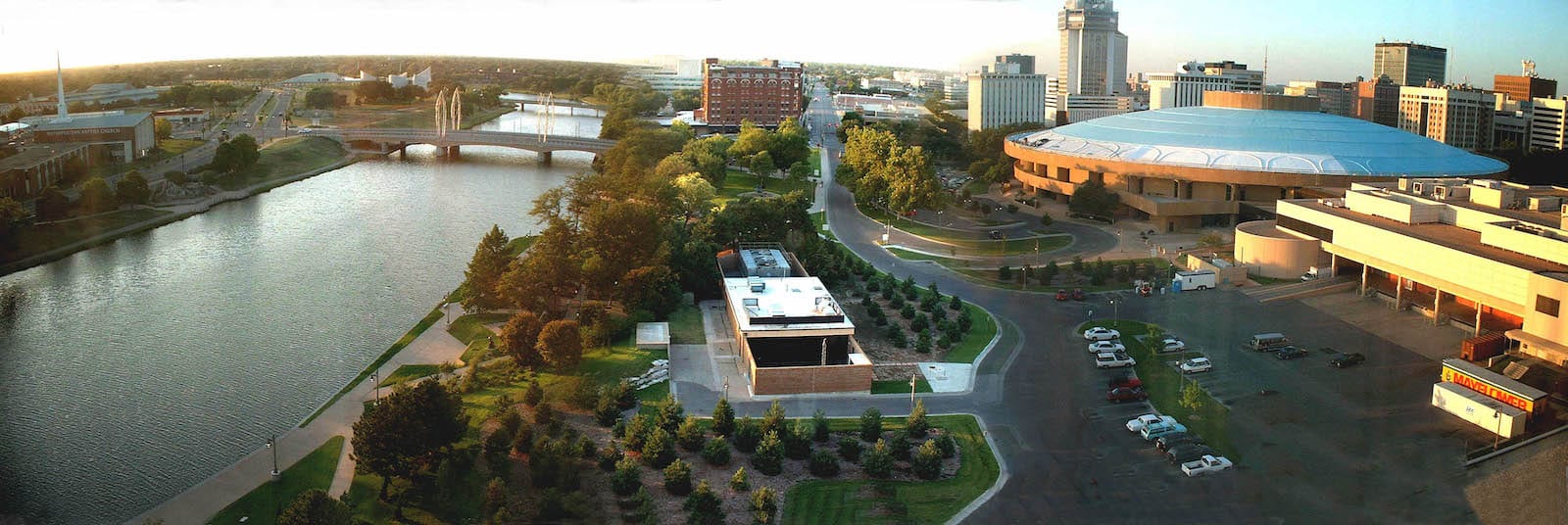 Downtown Wichita, Kansas. Photo: Hugh Mason
Downtown Wichita, Kansas. Photo: Hugh Mason
The capital city, Topeka, was the defendant in the landmark Brown vs. Board of Education of Topeka Supreme Court decision that ended the doctrine of “separate but equal” allowing segregation in public schools. Topeka was also home to the Reverend Charles Sheldon, a follower of the philosophy of Christian Socialism who coined the phrase, “What would Jesus do?”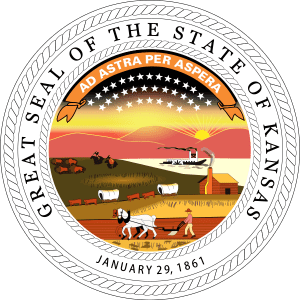
Kansas is known for jazz and barbecue (there’s an entire website dedicated to eating your way through the Kansas City barbecue scene). You can visit Dorothy’s House and the Land of Oz in the town of Liberal or go see a movie at the Plaza Cinema in Ottawa, which opened in 1907 and is listed in the Guinness Book of World Records as the oldest operating theater in the world.
It’s worth a visit to the Tallgrass Prairie National Preserve in eastern Kansas’ Flint Hills. Of the 400,000 square miles of tallgrass prairie that once covered North America and supported vast bison herds, less than four percent remains, most of which is in the Flint Hills. You can learn more about the region at the Flint Hills Discovery Center in Manhattan, Kansas.
Motto – “Ad astra per aspera” – Latin for “To the stars through difficulties”
Nicknames – The Sunflower State (official); The Wheat State; The Jayhawker State; The Free State
Population – 2.913 million (2019)
Capital City – Topeka
Largest City – Wichita
3. Oklahoma – Sooner State
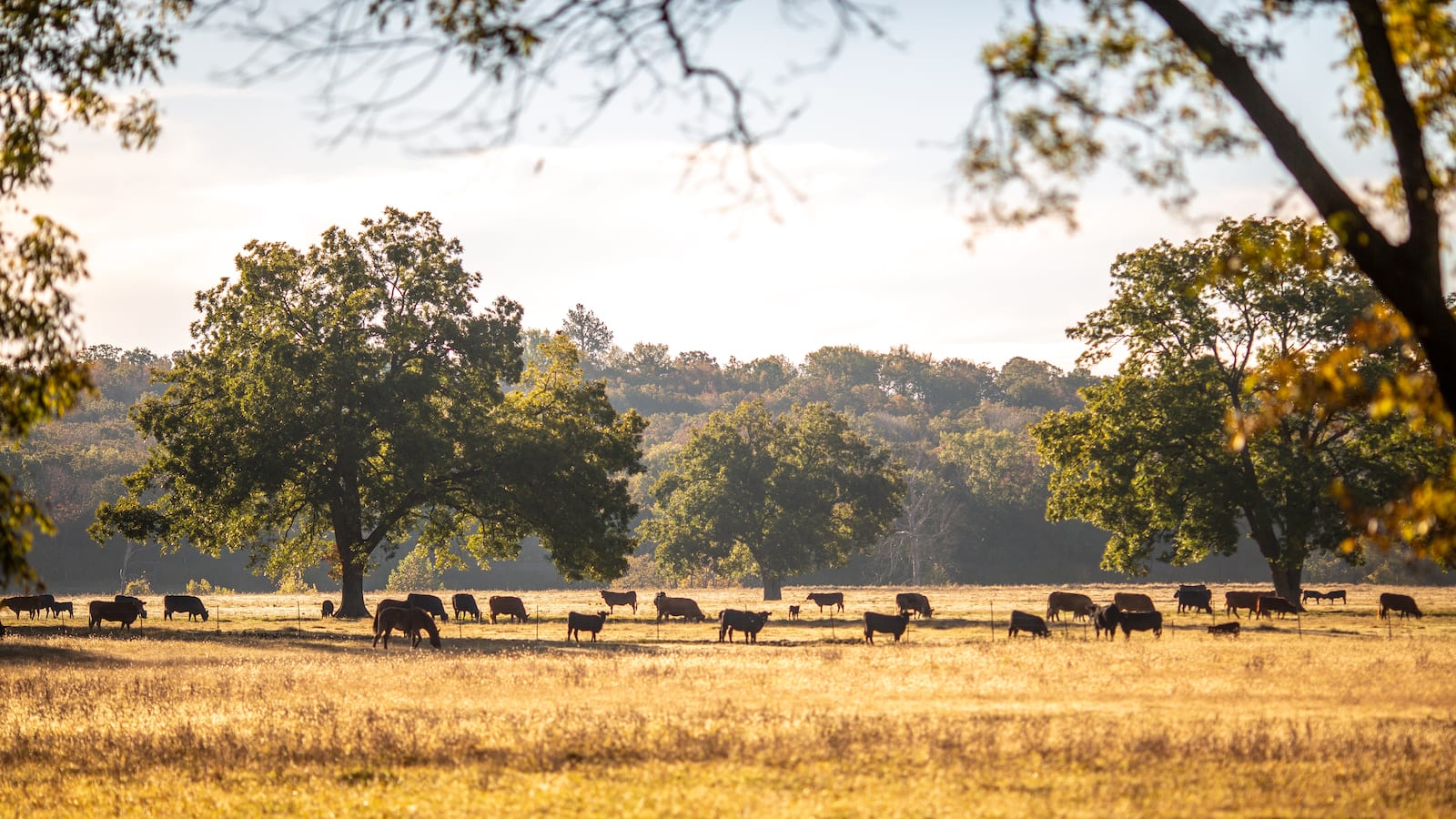 Land in Oklahoma. Photo: Thomas Hawk
Land in Oklahoma. Photo: Thomas Hawk
Southeast of Colorado is the panhandle of Oklahoma, whose official state anthem is—yes—the song “Oklahoma!” from the musical of the same name. Oklahoma was added to the United States in 1803 as part of the Louisiana purchase.
It was originally known as “Indian Territory” and tribes from the east were forcibly relocated there in the 19th century, suffering along the infamous “Trail of Tears”. Today, 39 tribes are headquartered in the state, which has the second largest indigenous population in the country.
During the “land runs” for settlement of the territory, settlers were only allowed to cross the border at a particular hour to claim homesteads. Oklahoma takes its state nickname, the Sooner State, from the settlers who crossed the border sooner than allowed. More than a million Oklahomans fled to California during the megadrought of the 1930s that created the Dust Bowl.
Oklahoma’s population began increasing after that and is still growing, with the majority of the state’s 3.9 million people living in the Oklahoma City and Tulsa areas.
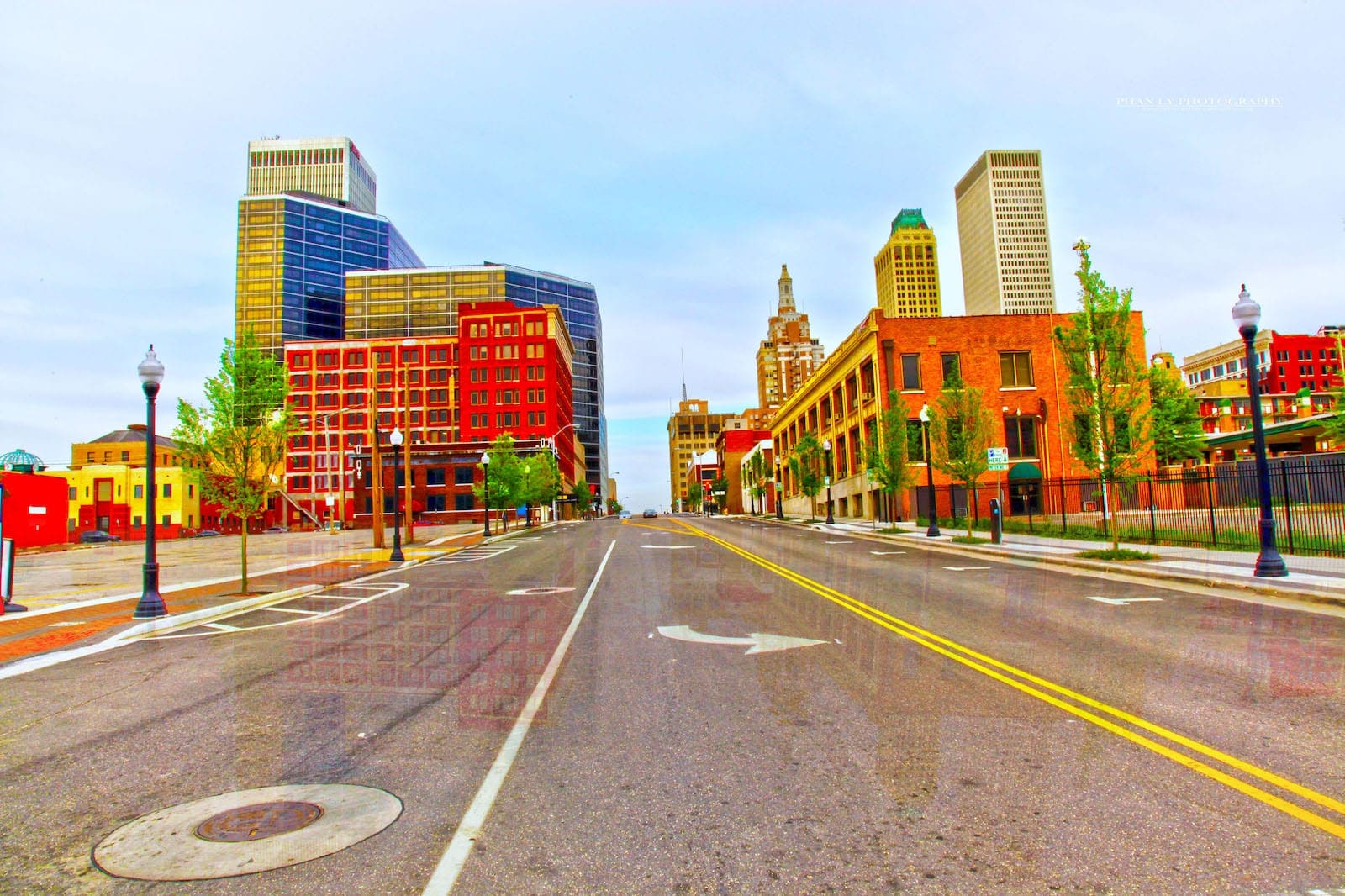 City of Tulsa, Oklahoma. Photo: Phan Ly
City of Tulsa, Oklahoma. Photo: Phan Ly
Route 66 crosses Oklahoma on its way from Chicago to Los Angeles. The famous road is known for 50s and 60s kitsch, and Pops Soda Ranch fits the bill perfectly (even though it was founded in 2007). The gas station/diner in Arcadia boasts a 66-foot tall, LED-lit bottle of “pop” as a landmark outside and over 700 types of soda, all arranged by color, inside.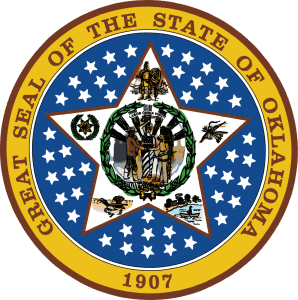
The Oklahoma City Memorial Marathon is run annually in late April and remembers the victims of the Oklahoma City bombing. The route passes one banner for each victim, and the marathon’s logo is the famous “Survivor Tree” that lived through the bombing and has become a symbol of hope and renewal for the entire state.
After you run the marathon, you can even partake of Oklahoma’s official state meal (the only state besides northern Louisiana to have one): fried okra, squash, cornbread, barbecued pork, biscuits, sausage and gravy, grits, corn, black-eyed peas, chicken fried steak, strawberries, and pecan pie.
Motto – “Labor Omnia Vincit” – Latin for “Work Conquers All”
Nicknames – Native America, Land of the Red Man, Sooner State
Population – 3.957 million (2019)
Capital City – Oklahoma City
Largest City – Oklahoma City
4. New Mexico – Land of Enchantment
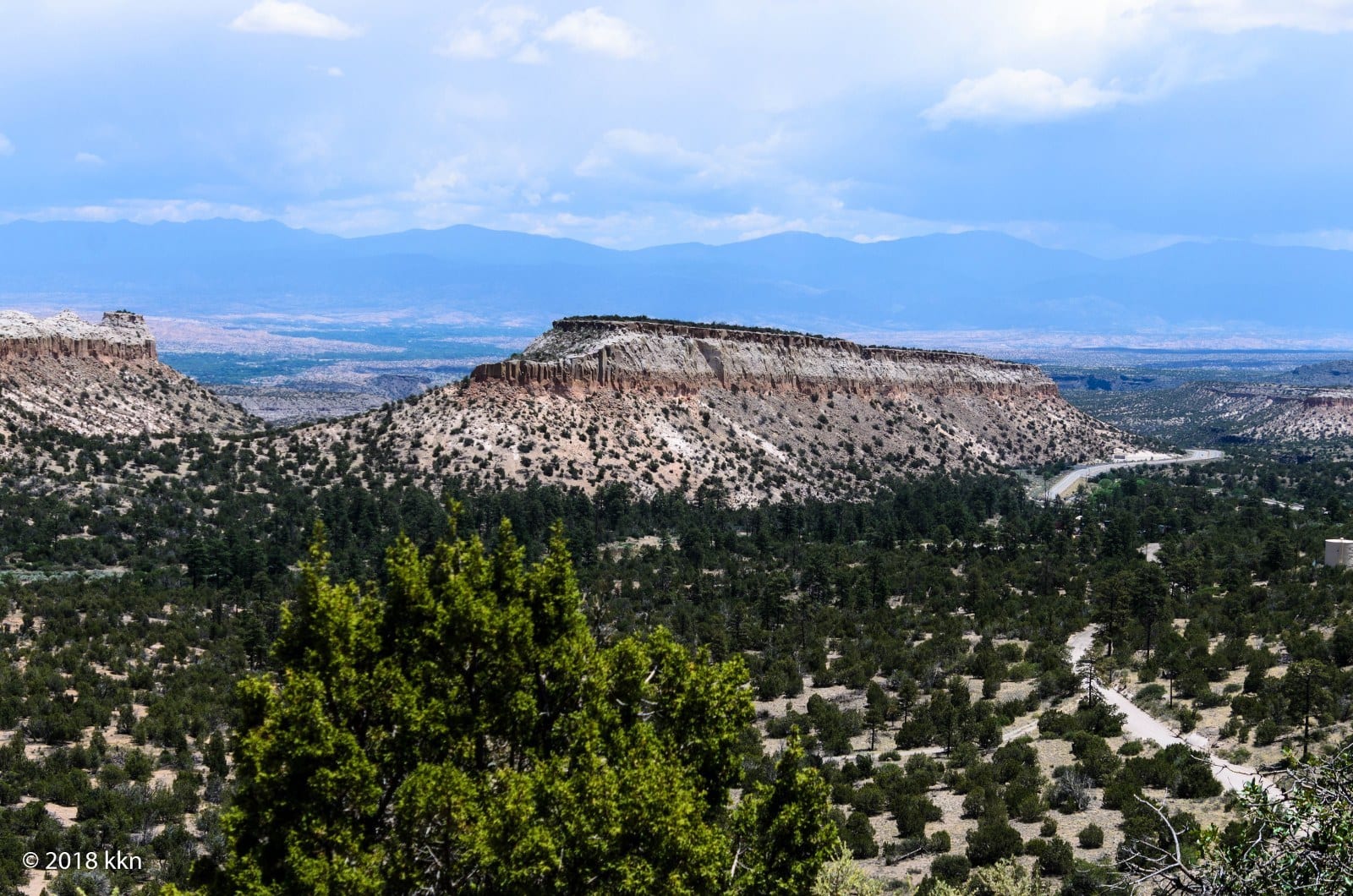 Land in New Mexico. Photo: Kari Nousiainen
Land in New Mexico. Photo: Kari Nousiainen
South of Colorado is New Mexico, the Land of Enchantment. New Mexico is where the High Plains and the Southwest meet, and a better state nickname is hard to imagine. Artists, photographers, and painters have flocked there for more than a century.
They’ve moved here in part to the extraordinary qualities of the land’s light and color, but also for the state’s unique blend of Native American, Hispanic, and Anglo cultures.
The eastern part of New Mexico is pure High Plains grassland. In the north are the Sangre de Cristo Mountains, traditional Spanish villages, and red chile. Western New Mexico is studded with mesas and cut by canyons, home to the Navajo Indians and the oil and gas industry.
In the south are agricultural land, ranches, and tasty green chiles. Running through the middle of it all is the Rio Grande Valley, where more than a dozen Native American pueblos still stand where their ancestors settled hundreds of years ago and began growing corn, beans, and squash.
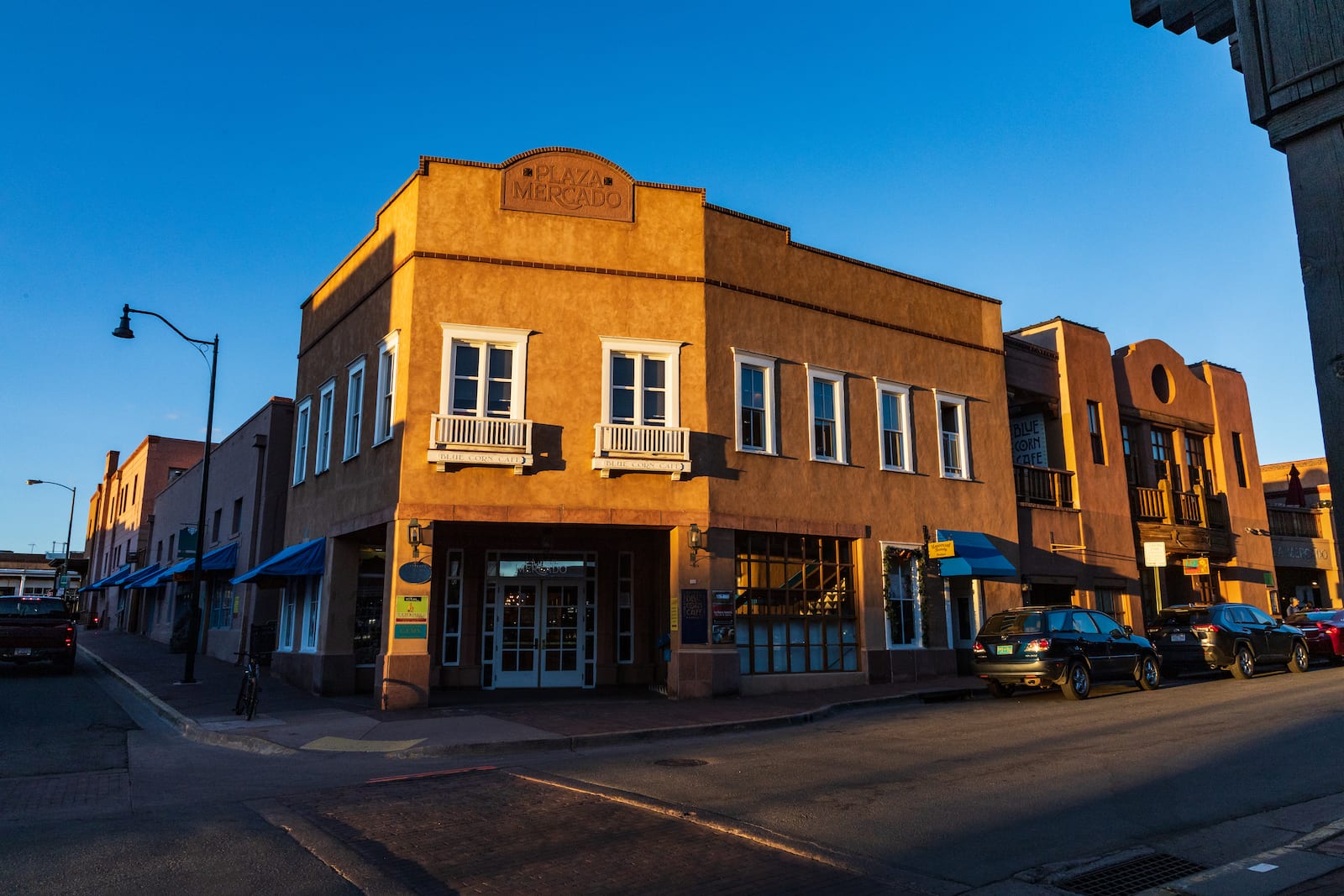 Sunset in Santa Fe, New Mexico. Photo: Simon Foot
Sunset in Santa Fe, New Mexico. Photo: Simon Foot
Spanish conquistadors arrived from New Spain (Mexico) in 1540, looking for the fabled cities of gold. Although the cities were never found, Spain settled the region in 1598 to take advantage of trade along the Rio Grande River. New Mexico’s capital, Santa Fe, was founded in 1610 to mark the end of the Camino Real, the “Royal Road” that came from Mexico City.
In 1822, established the Santa Fe Trail (passing thru Colorado) to bring goods from the east to Santa Fe, which thus became a vital trade link between Europe, the United States, and Mexico. New Mexico became a U.S. Territory in 1853, and a state in 1912.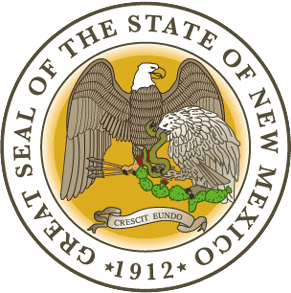
New Mexico has grown steadily since statehood. Currently, the state has 2.1 million inhabitants, of which nearly half identify as Hispanic or Latino, and roughly ten percent are American Indian. Nearly 30 percent of the population speaks Spanish, but will proudly tell you that their history, culture, and language come from Spain, not Mexico.
There are 23 different Native American tribes in the state: 19 pueblos, three different branches of the Apache, and the Navajo Nation. Most of the pueblos are open to visitors, and dances and ceremonies are held almost all year.
New Mexico has a thriving tourism sector. Santa Fe is renowned for incredible food, art, museums, architecture, and events that blend all of the cultural diversity of the state. Albuquerque has its annual hot air balloon festival in early October, during which hundreds of colorful balloons float through the sky above the city. Not surprisingly, the hot air balloon is New Mexico’s state aircraft.
The state is also known for its science and research. It’s the birthplace of the atomic bomb, which was built at the Los Alamos National Laboratory near Santa Fe and tested in Alamogordo, and the home of the Very Large Array, one of the world’s foremost astronomical radio observatories (made famous in the move “Contact.”)
And New Mexico is the only state with an official question. If you eat at any traditional restaurant and order something with chile, you will always be asked, “Red or Green?”
Motto: Crescit eundo English: It grows as it goes
Nickname – Land of Enchantment
Population – 2.097 million (2019)
Capital City – Santa Fe
Largest City – Albuquerque
5. Arizona – The Grand Canyon State
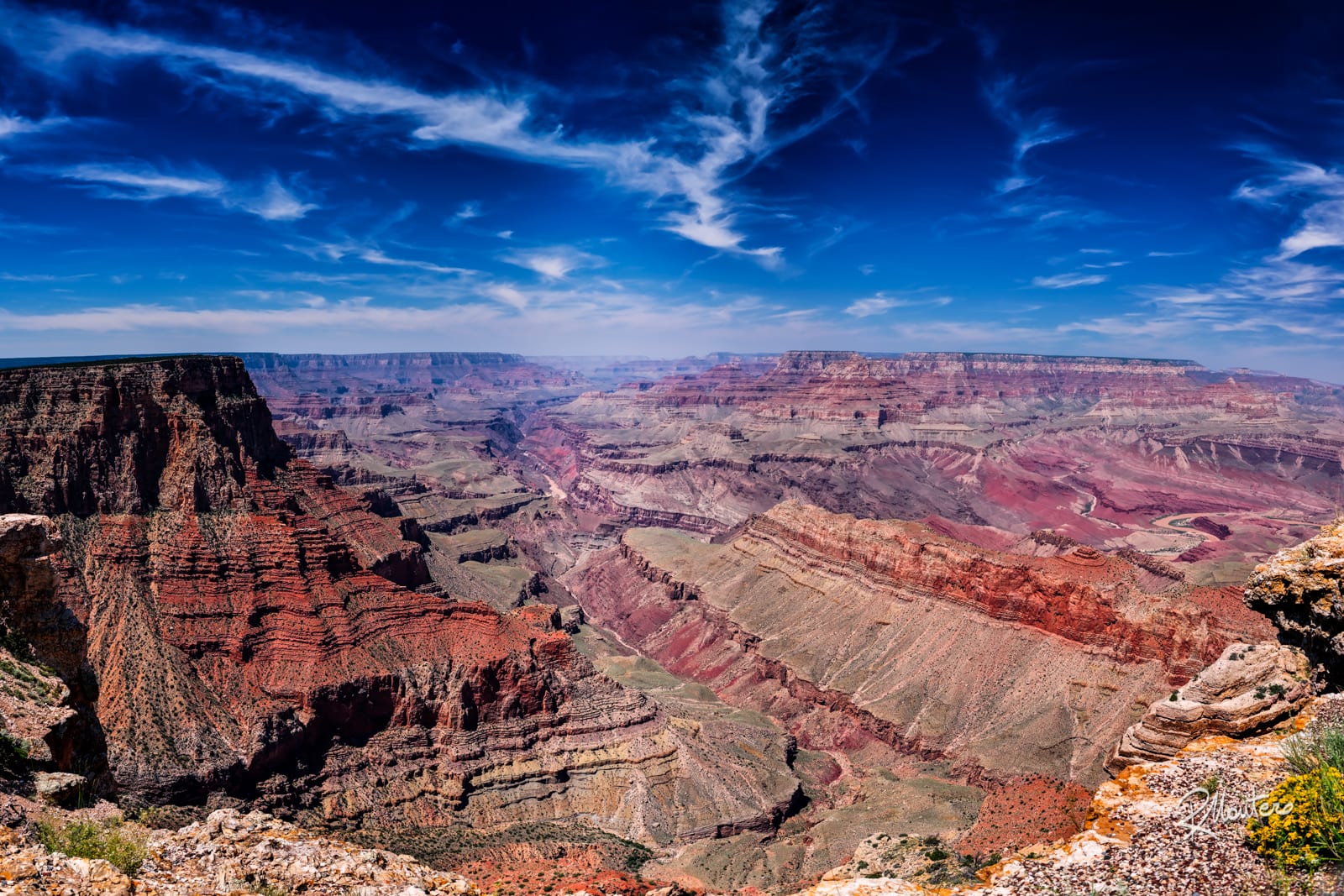 Desert View, Arizona. Photo: Riccardo Maria Mantero
Desert View, Arizona. Photo: Riccardo Maria Mantero
Another one of the 4 Corners states, Colorado shares its southwest corner with Arizona, the Grand Canyon state. Once a part of Mexico, the southern part of Arizona still has a strong connection to that country, from some of the best Mexican food in the country, to street signs and billboards in Spanish.
Arizona was the last of the Lower 48 states to be admitted to the union, on Valentine’s Day, 1912. After a century of copper extraction, it has become a focus for retirees, tourism, and agriculture.
Centuries before the Spanish arrived, the Hohokam Indians in the Phoenix and Tucson basins had developed intricate and complex canal systems to irrigate their crops. Irrigation in Phoenix still uses some of those old canals.
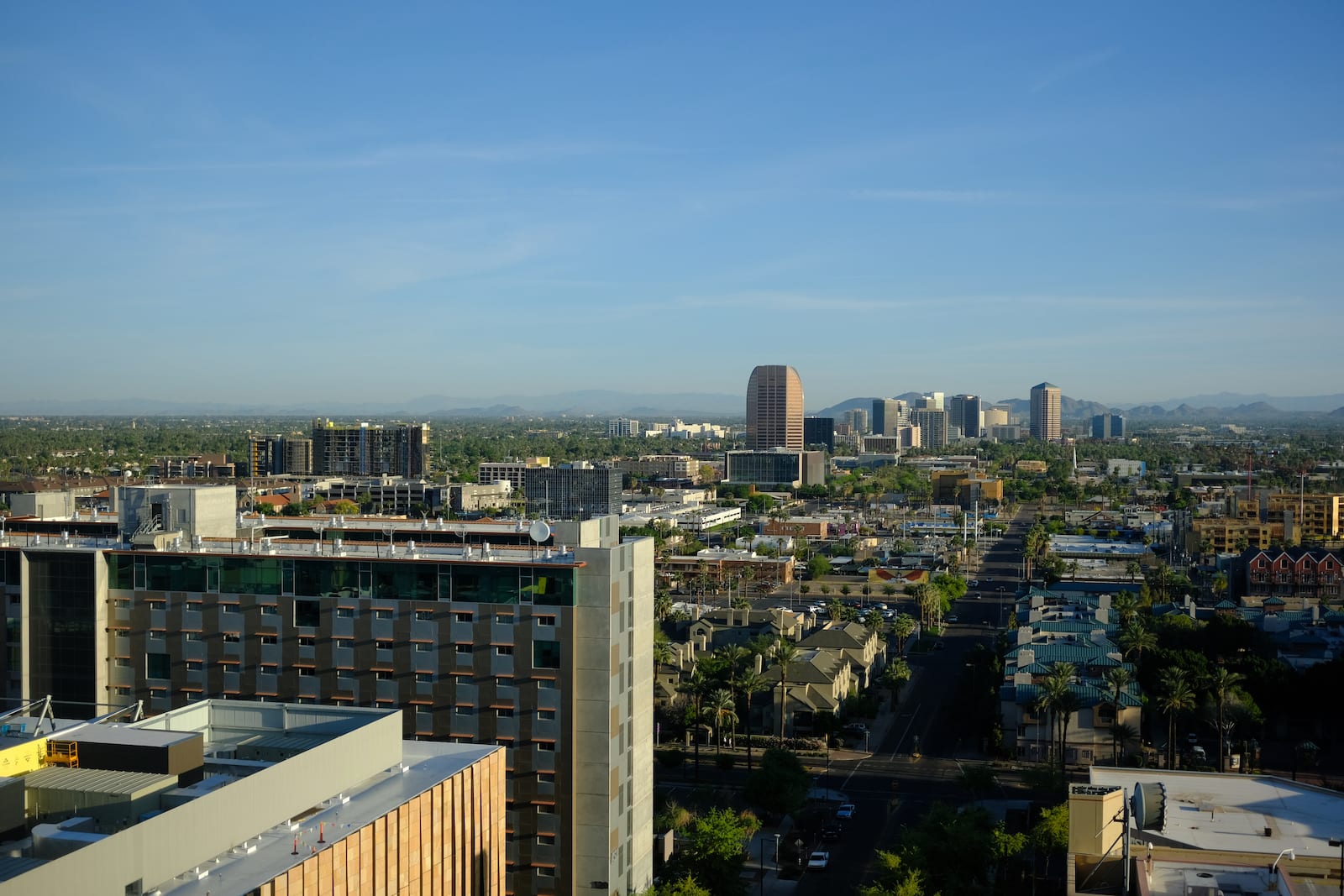 Phoenix, Arizona. Photo: Sean Davis
Phoenix, Arizona. Photo: Sean Davis
Arizona’s landscapes are some of the most iconic in the country, from the Grand Canyon and the red rocks of Sedona in northern Arizona to the saguaro cacti of the Sonoran Desert in the south. But not all of Arizona is desert; Flagstaff is in the pines at 7,000 feet.
The state has such a diversity of topography that it has recorded both the highest and the lowest temperatures in the country—on the same day!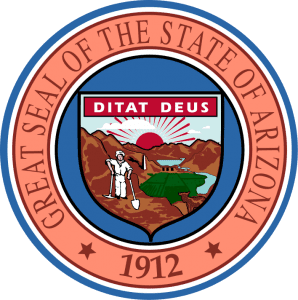
Besides the Grand Canyon, there are more than 120 national monuments, state parks, historical parks, national forests, and wilderness and recreation areas in the state. Arizona also has an impressive number of cultural attractions, from world-class museums to the Biosphere II, a massive research facility near Tucson that studies earth systems and processes.
Tucson’s Arizona-Sonora Desert Museum combines a botanical garden, aquarium, zoo, natural history museum, and art gallery.
Arizona’s rough and tumble frontier history is memorialized in Tombstone (affiliate link), where the famous “gunfight at the OK Corral” is reenacted every day for tourists (this frontier history also gave Arizona its state firearm: the Colt Single Action Army “Peacemaker”).
The population of Arizona is still growing rapidly and is currently around 7.3 million, roughly a 20 percent increase since 2000. The vast majority of that population lives in the Phoenix metro area. There are 21 federally recognized Indian tribes on 20 reservations in Arizona, the most acreage of any state designated as tribal land.
Arizona has some notable sons and daughters (including Linda Ronstadt), but some of the most important was the Navajo Code Talkers (some from New Mexico as well). These men helped win World War II by using their language to develop the only spoken military code that was never broken by the Japanese.
There is an excellent exhibit on the Code Talkers in—of all places—the Burger King in Kayenta. It’s worth a visit.
Motto – “Ditat Deus” – Latin for “God enriches”
Nicknames – The Grand Canyon State; The Copper State; The Valentine State
Population – 7.279 million (2019)
Capital City – Phoenix
Largest City – Phoenix
6. Utah – Beehive State
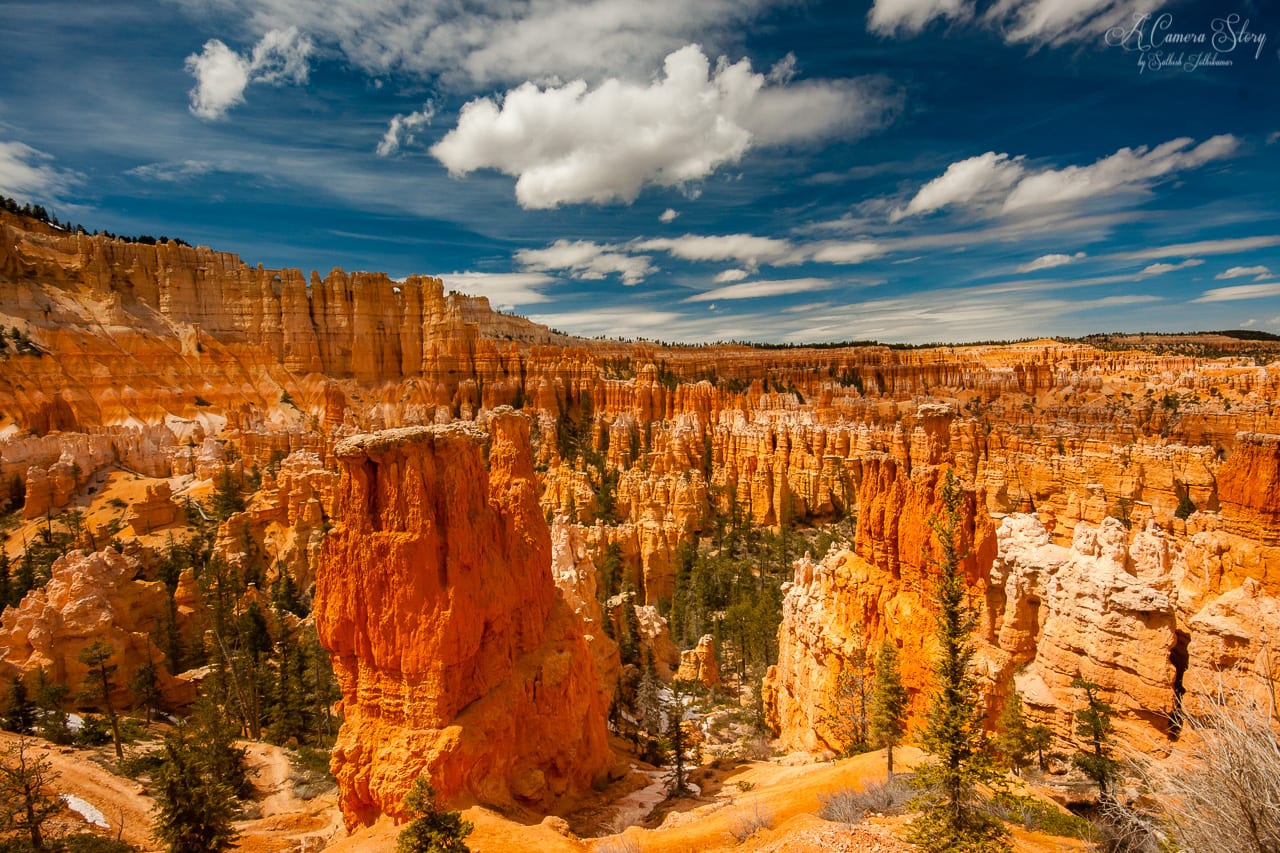 Utah bryce Canyon. Photo: Sathish J
Utah bryce Canyon. Photo: Sathish J
West of Colorado lies Utah, the headquarters of the Church of Jesus Christ of Latter-Day Saints. In 1847, Brigham Young led Mormon settlers across the country, hoping to establish a new nation known as Deseret, free from the religious persecution they had suffered at the hands of the citizens and government of the United States.
Although the land they settled became a United States territory in 1850, the Mormons continued living in relative autonomy until becoming the 45th state in 1896.
The Mormon pioneers valued hard work (“Industry” is the state motto); they chose the industrious honeybee as their state insect and the Beehive State as their nickname. Utah even has an official state cooking pot that reflects its pioneer beginnings: the Dutch oven.
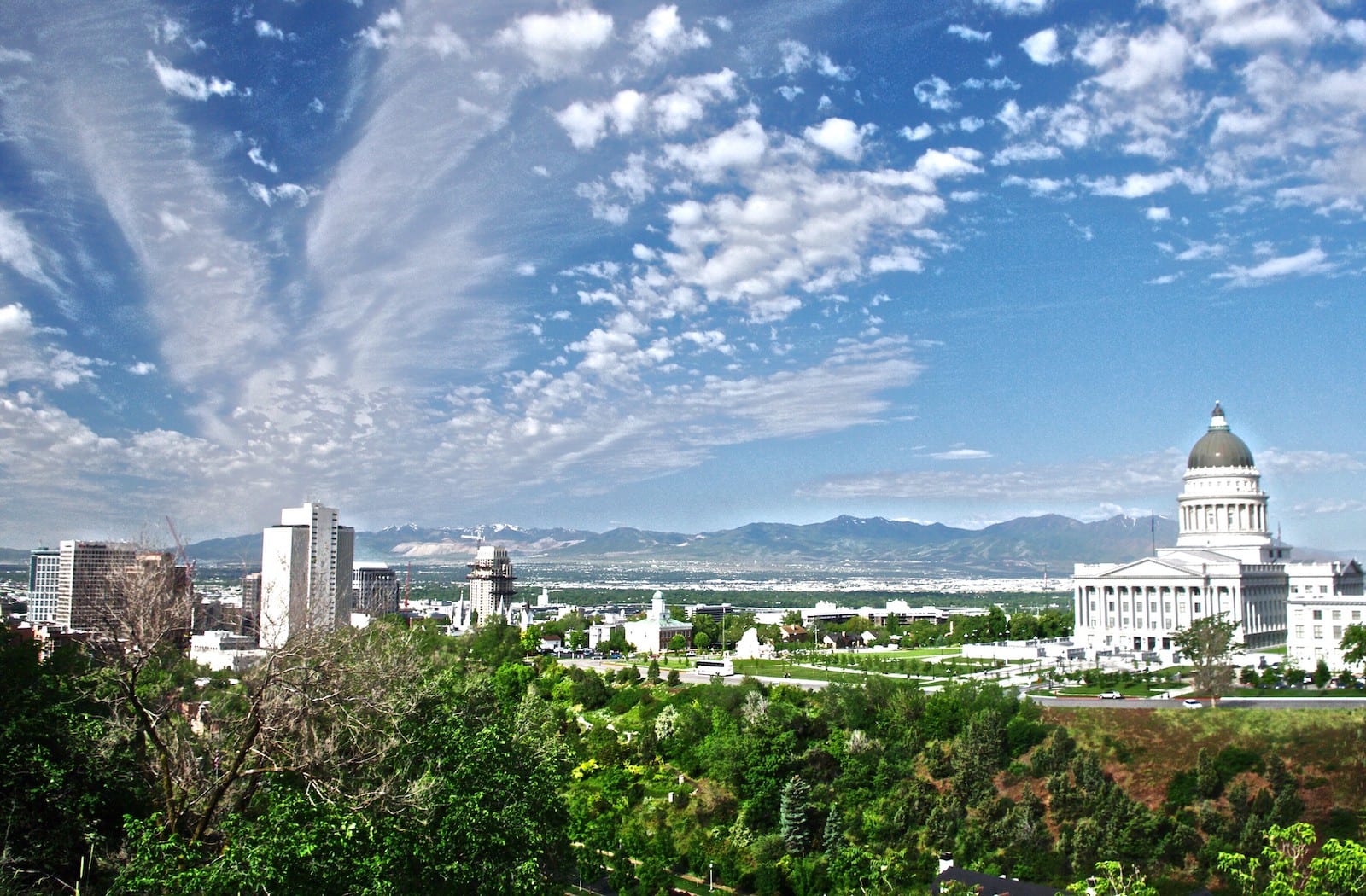 Capitol building of the Beehive State, Utah. Photo: Ron Reiring
Capitol building of the Beehive State, Utah. Photo: Ron Reiring
The Mormon church still influences life in Utah, although the state has become much more secular. Only about 55 percent of the populace now identifies as Mormon, and an influx of immigrants has given the state a more diverse flavor. It is a rapidly growing population; the current 3.2 million people is about a 30 percent increase since 2000. Utah also has the highest birth rate and the youngest population in the country.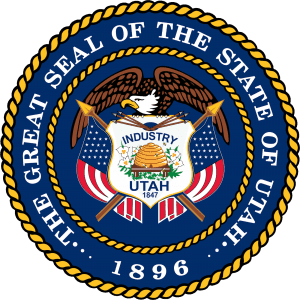
If Utah is known as the stronghold of Mormon culture, it is also famous for having some of the most spectacular landscapes in the world. Southeastern Utah is part of the Colorado Plateau: a landscape of deep canyons and rivers such as the Green and Colorado, the San Juan, Virgin, and Dolores, and landforms such as mesas, buttes, hoodoos, goblins, natural bridges, arches, goosenecks.
The place is literally a geology textbook (seriously, all geology textbooks contain pictures of Utah landscapes!). Archeological sites and rock art throughout the region are hundreds and thousands of years old.
Utah is the home of the “Big Five” national parks (Arches, Canyonlands, Bryce Canyon, Zion, and Capitol Reef), national monuments such as Grand Staircase-Escalante, Bears Ears, Dinosaur, and Hovenweep, several national forests, and other places such as Monument Valley Tribal Park and Lake Powell National Recreation Area. And in recent decades, Utah has become a draw for outdoor recreation and cultural events.
Former mining towns such as Park City and Alta are now ski resorts that consistently rank among the best snow conditions in the country. Once a hardscrabble uranium mining town, Moab is now a world-renowned center for mountain biking and jeeping. The state’s extraordinary fossil and natural history is displayed at the Natural History Museum of Utah.
Salt Lake City’s Temple Square is the 16th most visited tourist attraction in the United States. Events abound. The Sundance Film Festival occurs every February in a variety of venues near Salt Lake City. There’s even the Utah Shakespearean Festival in Cedar City. Utah does not lack things to do, inside or outside.
Motto – Industry
Nicknames – Beehive State, The Mormon State, Deseret
Population – 3.206 million (2019)
Capital City – Salt Lake City
Largest City – Salt Lake City
7. Wyoming – Equality State
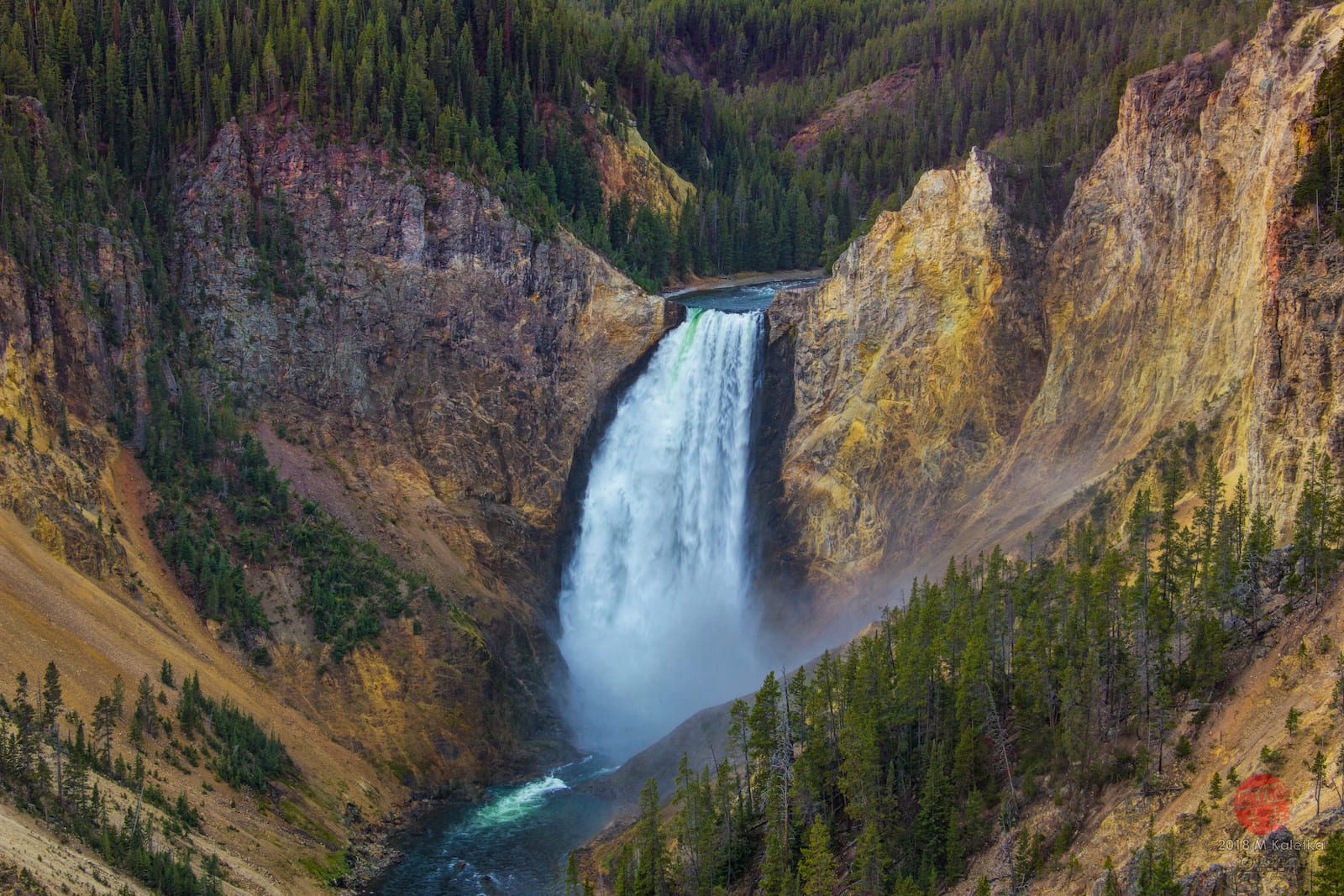 Lower Falls, Yellowstone, Wyoming. Photo: Mark Kaletka
Lower Falls, Yellowstone, Wyoming. Photo: Mark Kaletka
North of Colorado is Wyoming, the Cowboy State. If you have images in your mind of what the landscape where cowboys live should look like, it’s probably Wyoming—wide open, wind-swept plains, snow-capped mountain peaks, crystal clear mountain rivers and lakes, wolf and grizzly country, space enough to last a lifetime.
Wyoming is the least populated state in the country and has an average of just over five people per square mile.
Although the population has increased slowly since 1990, the current population of about 570,000 people is down from a high of 585,000 in 2015. The most populous cities in the state are Laramie, Casper, and the capital Cheyenne.
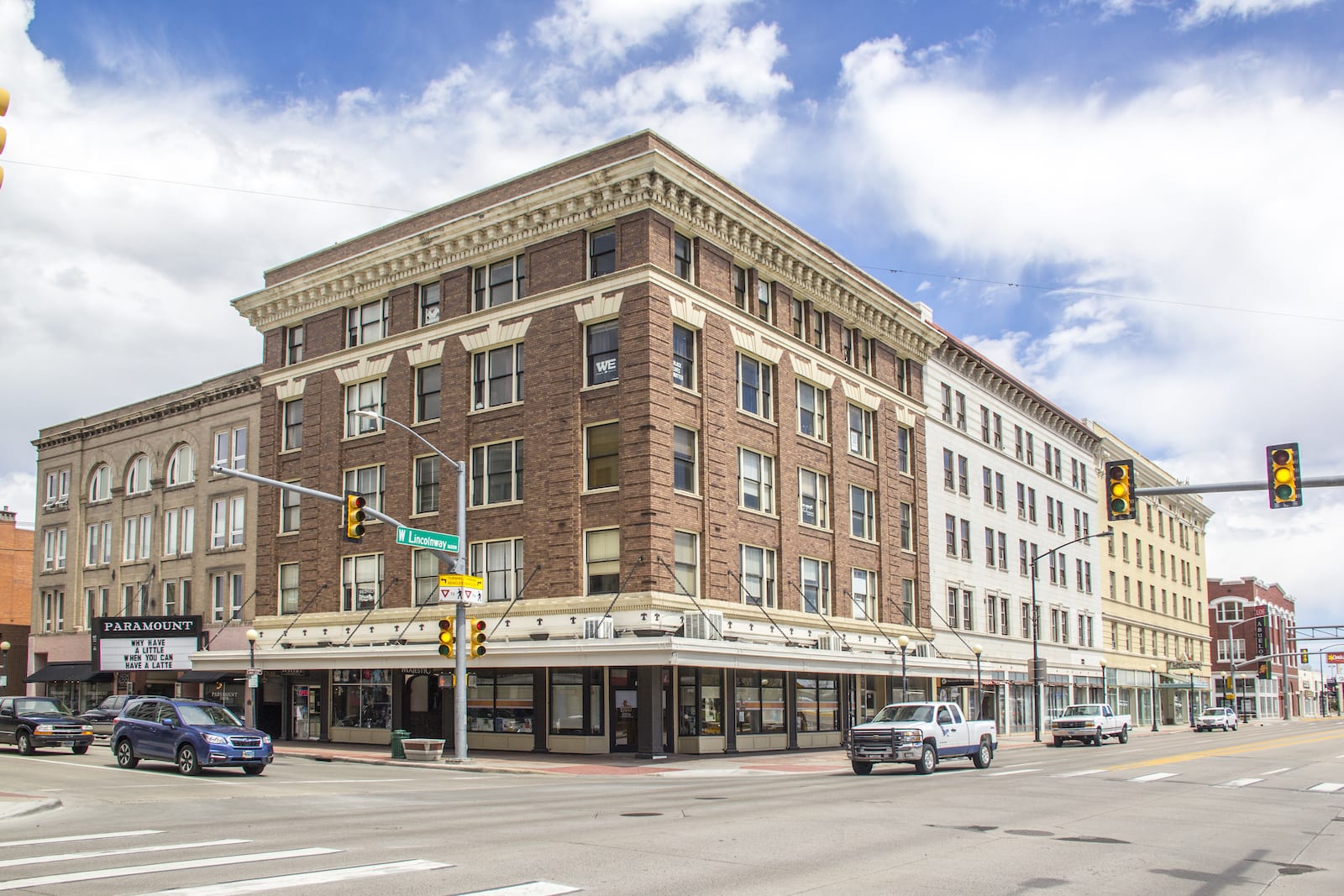 Cheyenne, Wyoming. Photo: John Martinez Pavliga
Cheyenne, Wyoming. Photo: John Martinez Pavliga
Wyoming was home to numerous high plains tribes before the coming of Europeans, including the Crow, Arapahoe, Lakota Sioux, and Shoshone. When trappers and mountain men began exploring the region, some of their descriptions (especially of Yellowstone) were assumed to be exaggerations.
In the move to settle the West, Wyoming played an important role; most wagon trains bound for Oregon, Utah, and California used South Pass—the lowest point on the Continental Divide between the central and southern Rockies—to get through the mountains. People quickly realized that no one had been exaggerating their descriptions of the landscape.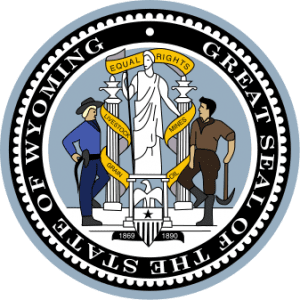
Wyoming became a territory in 1868 and in 1869 became the first territory to allow women to vote. At that point in time, men outnumbered women six to one, and politicians hoped the law would encourage more women to settle there. Wyoming also became the first state to allow women to hold political office. It became the 44th state on July 10, 1890. Its official state motto is “Equal Rights.”
50 million years ago a massive lake covered the southwestern portion of Wyoming. The fish, insects, reptiles, amphibians, plants, and mammals that lived in and around this lake have been preserved in extraordinary detail, and can be seen at Fossil Butte National Monument, considered one of the world’s finest examples of the aquatic communities that existed during the Eocene Period. The state fossil is a fish called Knightia, found by the millions in these deposits.
Wyoming produces roughly 40% of the nation’s coal, and a massive natural gas boom has fueled recent population growth. Unlike many other states where people come to the cities, the population is instead growing in the rural areas where natural gas is found. Tourism is also an important driver of the state’s economy, especially in western Wyoming.
Its abundant federal land and natural beauty are protected in several national forests, national monuments, national parks and recreation areas, and wildlife refuges. “America’s Best Idea” had its birth here; Yellowstone was established in 1872 as the country’s first national park, and Devil’s Tower became the nation’s first national monument on September 24, 1906.
Today one can hike, camp, ski, ride horses, mountain bike, run rivers, fish and hunt, snowmobile, climb, watch birds, do photography and look for wolves, bison, and grizzly in the extraordinary diversity of western Wyoming.
Motto – Equal Rights
Nickname – Equality State; Cowboy State; Big Wyoming
Population – 578,759 (2019)
Capital City – Cheyenne
Largest City – Cheyenne
It’s clear that whichever direction you travel from Colorado, you’ll find something interesting, beautiful, and unusual, so it makes sense to head out there and get to know your neighbors.
